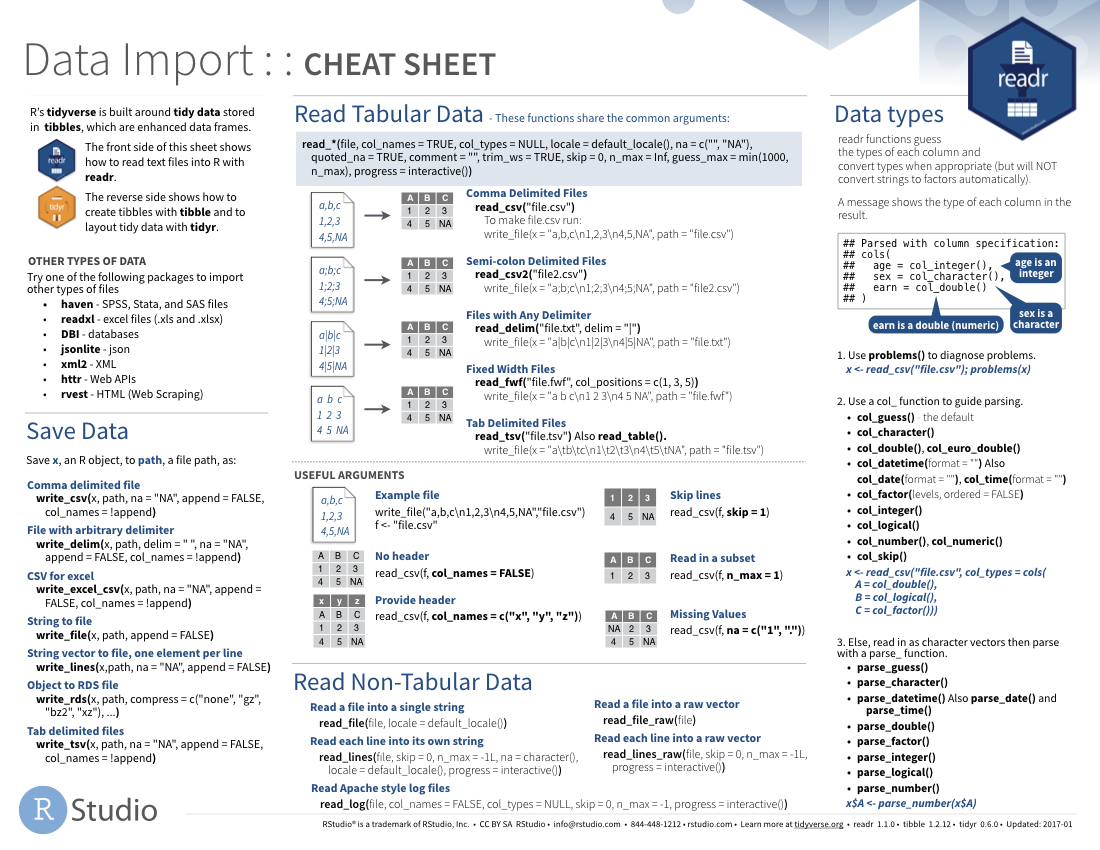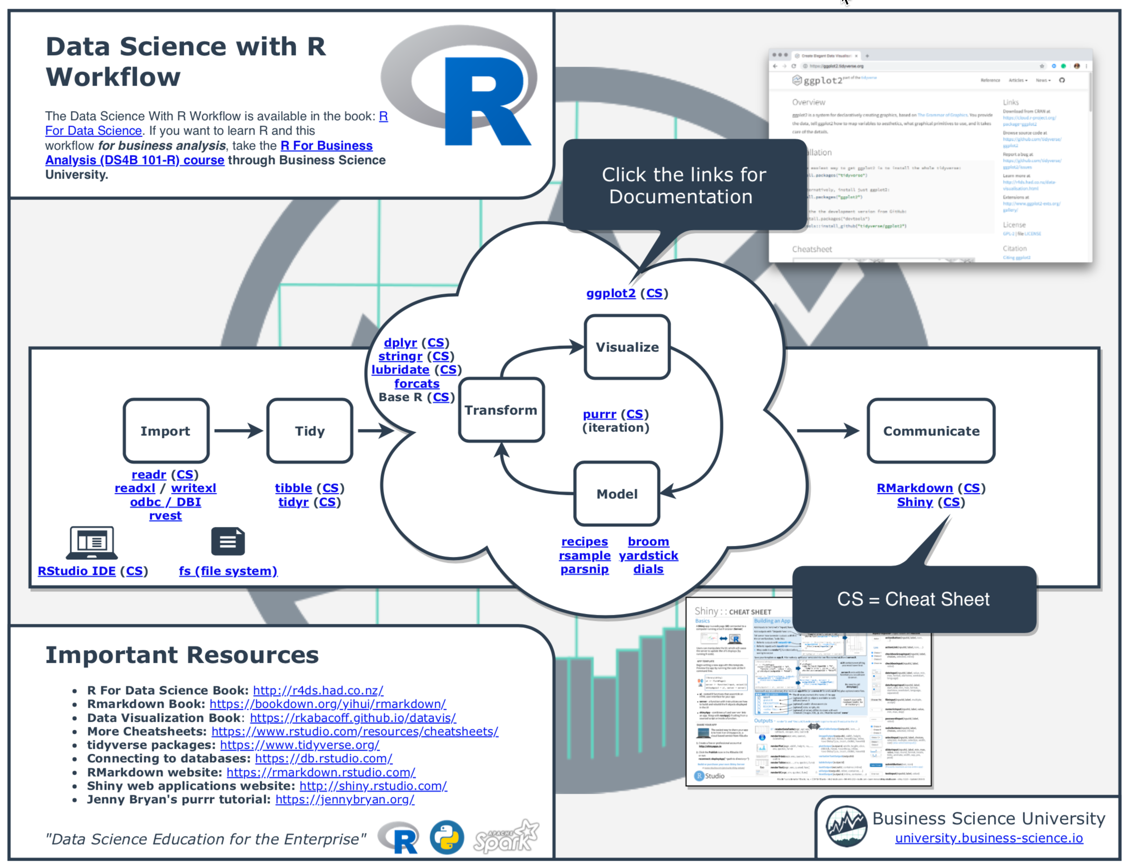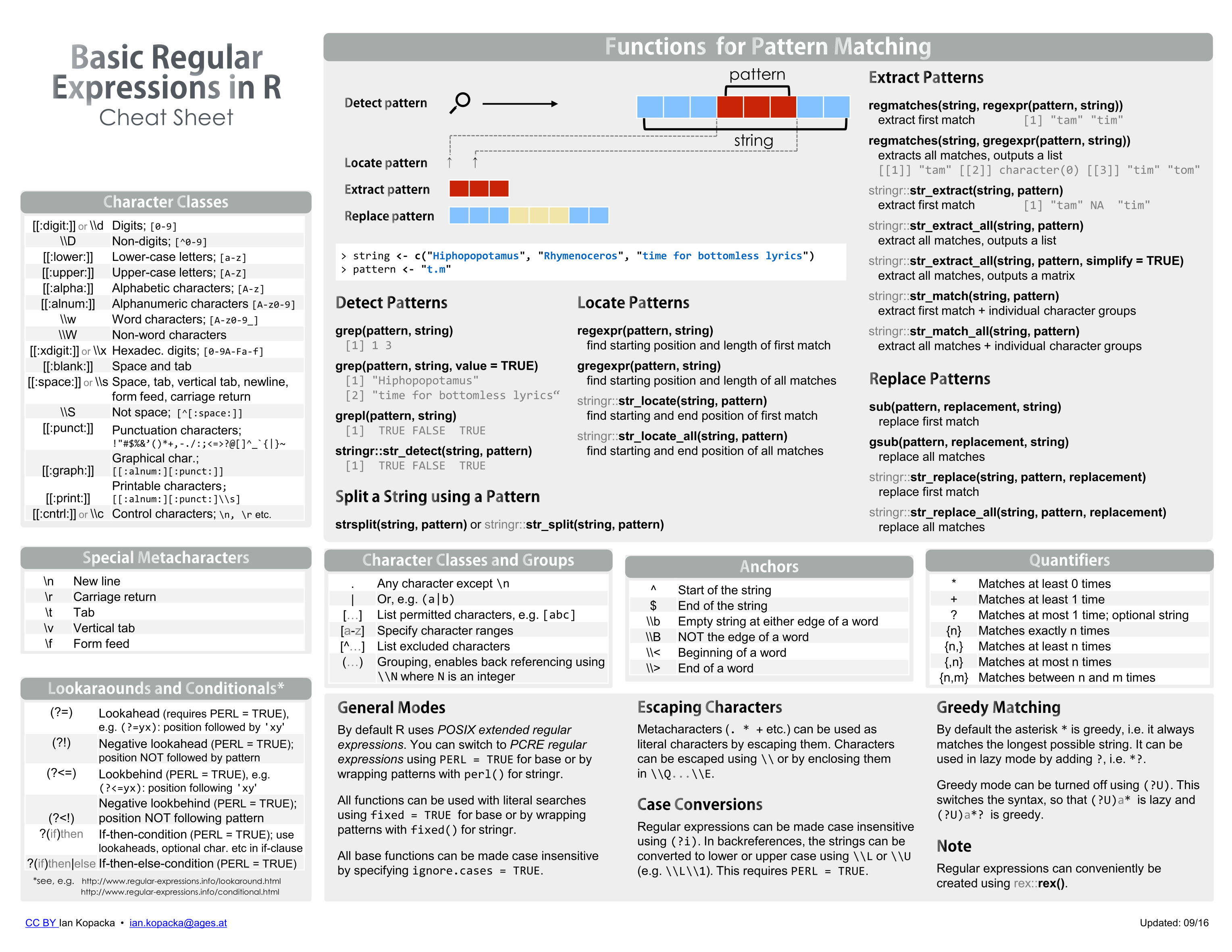Data Visualization in R: ggvis Cheat Sheet. 9 Apr 15, updated 12 May 16. 1 Page (0) R Basic Cheat Sheet. R For Dummies Cheat Sheet By Andrie de Vries, Joris Meys R is more than just a statistical programming language. It’s also a powerful tool for all kinds of data processing and manipulation, used by a community of programmers and users, academics, and practitioners. Rnorm(n,mean,sd) #randomly generate n numbers from a Normal distribution with the specific mean and sd pnorm #find probability (area under curve) of a Normal(10,3^2) distribution to the left #of 8,i.e. DataCamp’s Python Pandas cheat sheet; Cheat sheets for R: The R's ecosystem has been expanding so much that a lot of referencing is needed. The R Reference Card covers most of the R world in few pages. The Rstudio has also published a series of cheat sheets to make it easier for the R community. R Syntax Comparison:: CHEAT SHEET Even within one syntax, there are o'en variations that are equally valid. As a case study, let’s look at the ggplot2 syntax. Ggplot2 is the plotting package that lives within the tidyverse. If you read down this column, all the code here produces the same graphic. Quickplot ggplot.
I reproduce some of the plots from Rstudio’s ggplot2 cheat sheet using Base R graphics. I didn’t try to pretty up these plots, but you should.

I use this dataset
R Cheat Sheet Anova
The main functions that I generally use for plotting are
- Plotting Functions
plot: Makes scatterplots, line plots, among other plots.lines: Adds lines to an already-made plot.par: Change plotting options.hist: Makes a histogram.boxplot: Makes a boxplot.text: Adds text to an already-made plot.legend: Adds a legend to an already-made plot.mosaicplot: Makes a mosaic plot.barplot: Makes a bar plot.jitter: Adds a small value to data (so points don’t overlap on a plot).rug: Adds a rugplot to an already-made plot.polygon: Adds a shape to an already-made plot.points: Adds a scatterplot to an already-made plot.mtext: Adds text on the edges of an already-made plot.
- Sometimes needed to transform data (or make new data) to make appropriate plots:
table: Builds frequency and two-way tables.density: Calculates the density.loess: Calculates a smooth line.predict: Predicts new values based on a model.
All of the plotting functions have arguments that control the way the plot looks. You should read about these arguments. In particular, read carefully the help page ?plot.default. Useful ones are:

main: This controls the title.xlab,ylab: These control the x and y axis labels.col: This will control the color of the lines/points/areas.cex: This will control the size of points.pch: The type of point (circle, dot, triangle, etc…)lwd: Line width.lty: Line type (solid, dashed, dotted, etc…).
Discrete

Barplot
Different type of bar plot
Continuous X, Continuous Y
Scatterplot

R Cheat Sheet Regex
Jitter points to account for overlaying points.
Add a rug plot
Add a Loess Smoother
Loess smoother with upper and lower 95% confidence bands
Loess smoother with upper and lower 95% confidence bands and that fancy shading from ggplot2.
Add text to a plot
Discrete X, Discrete Y
Mosaic Plot
Color code a scatterplot by a categorical variable and add a legend.
par sets the graphics options, where mfrow is the parameter controling the facets.
The first line sets the new options and saves the old options in the list old_options. The last line reinstates the old options.
This R Markdown site was created with workflowr
